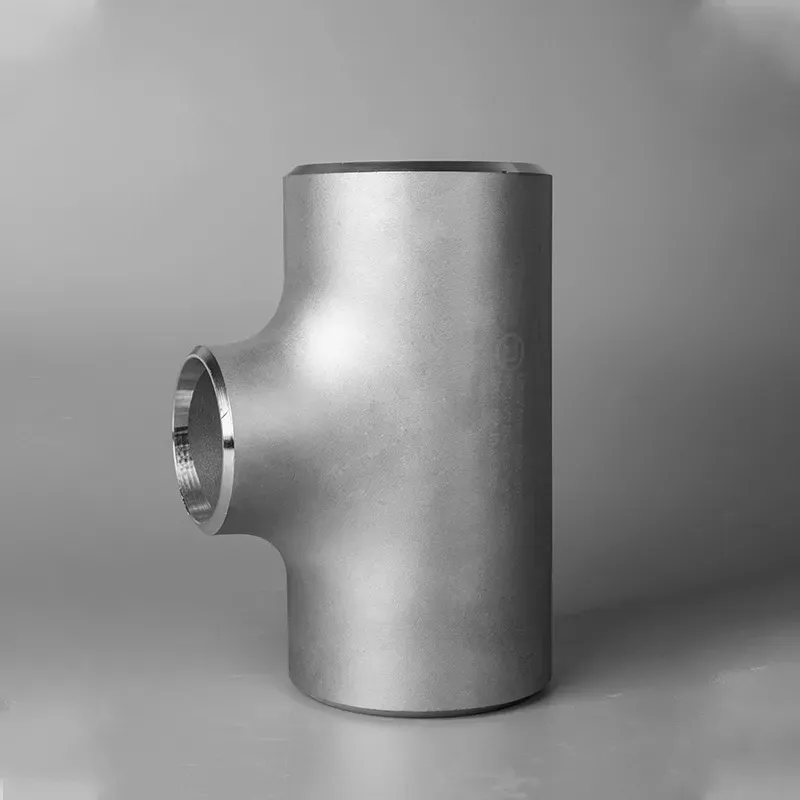-
Cangzhou Yulong Steel Co., Ltd.
-
Phone:
+86 13303177267 -
Email:
admin@ylsteelfittings.com
- English
- Arabic
- Italian
- Spanish
- Portuguese
- German
- kazakh
- Persian
- Greek
- French
- Russian
- Polish
- Thai
- Indonesian
- Vietnamese
- Zulu
- Korean
- Uzbek
- Hindi
- Serbian
- Malay
- Ukrainian
- Gujarati
- Haitian Creole
- hausa
- hawaiian
- Hebrew
- Miao
- Hungarian
- Icelandic
- igbo
- irish
- Japanese
- Javanese
- Kannada
- Khmer
- Rwandese
- Afrikaans
- Albanian
- Amharic
- Armenian
- Azerbaijani
- Basque
- Belarusian
- Bengali
- Bosnian
- Bulgarian
- Catalan
- Cebuano
- China
- China (Taiwan)
- Corsican
- Croatian
- Czech
- Danish
- Esperanto
- Estonian
- Finnish
- Frisian
- Galician
- Georgian
- Kurdish
- Kyrgyz
- Lao
- Latin
- Latvian
- Lithuanian
- Luxembourgish
- Macedonian
- Malgashi
- Malayalam
- Maltese
- Maori
- Marathi
- Mongolian
- Myanmar
- Nepali
- Norwegian
- Norwegian
- Occitan
- Pashto
- Dutch
- Punjabi
- Romanian
- Samoan
- Scottish Gaelic
- Sesotho
- Shona
- Sindhi
- Sinhala
- Slovak
- Slovenian
- Somali
- Sundanese
- Swahili
- Swedish
- Tagalog
- Tajik
- Tamil
- Tatar
- Telugu
- Turkish
- Turkmen
- Urdu
- Uighur
- Welsh
- Bantu
- Yiddish
- Yoruba

Nov . 20, 2024 06:09 Back to list
100mm 90 degree elbow
Understanding the 100mm 90 Degree Elbow A Key Component in Piping Systems
In the world of plumbing and industrial piping, the 100mm 90 degree elbow is a fundamental component that facilitates the efficient flow of fluids while maintaining the integrity of the system. This particular fitting is designed to change the direction of the pipeline by 90 degrees, enabling a smooth transition in the flow of liquids or gases. Understanding its design, applications, materials, and benefits is essential for those involved in piping system installation and maintenance.
Design and Specifications
The 100mm 90 degree elbow refers to a fitting with a nominal diameter of 100 millimeters. The 90 degree indicates the angle through which the pipe turns, commonly used in both residential and commercial plumbing systems. These elbows are manufactured in various configurations, including short radius and long radius versions. The short radius elbow is ideal for confined spaces where the bend needs to be abrupt, while the long radius elbow provides a gentler curve, reducing turbulence and pressure drop in the fluid flow.
Dimensions and Standards
Typically, these fittings adhere to international standards such as ASME, ANSI, and ISO, ensuring compatibility and reliability in various applications. For instance, the wall thickness and bend radius can vary based on the material being used and the pressure rating required for the system. The selection of the right elbow type is critical to maintain the hydraulic integrity of the piping system.
Applications
The applications of the 100mm 90 degree elbow are diverse
. They are commonly used in1. Residential Plumbing From shower installations to toilet connections, elbows help navigate piping around obstacles. 2. HVAC Systems In heating and cooling systems, elbows are essential in routing ducts and pipes for optimal airflow. 3. Industrial Applications Used extensively in chemical plants, oil refineries, and water treatment facilities, where efficient fluid transport is crucial.
100mm 90 degree elbow

These elbows not only help minimize space usage but also contribute to a more organized and efficient pipe layout.
Materials Used
The materials selected for manufacturing 100mm 90 degree elbows vary depending on the application's requirements. Common materials include
- PVC (Polyvinyl Chloride) Lightweight and corrosion-resistant, suitable for cold water applications. - CPVC (Chlorinated Polyvinyl Chloride) Suitable for hot water applications due to its higher temperature tolerance. - Steel (Carbon and Stainless) High strength and durability make steel elbows ideal for high-pressure systems, especially in industrial settings. - Copper Often used in plumbing applications due to excellent thermal conductivity.
The choice of material impacts not only the elbow's performance but also its longevity and maintenance requirements.
Benefits of Using 100mm 90 Degree Elbow
Incorporating 100mm 90 degree elbows in piping systems provides numerous benefits. They facilitate efficient fluid movement, reducing the risk of blockages and pressure build-up. By enabling smooth directional changes, these fittings help maintain the flow rate and overall efficiency of the system. Additionally, using high-quality elbows can prevent leaks and minimize the need for frequent replacements, ultimately leading to cost savings in maintenance and operation.
Conclusion
In summary, the 100mm 90 degree elbow is more than just a simple connector; it serves as a vital element in the design and functionality of piping systems. Its ability to alter the direction of fluid flow while ensuring efficiency and reliability makes it indispensable in various applications, from residential plumbing to complex industrial processes. Understanding its specifications, applications, and benefits can help professionals make informed decisions and enhance the performance of their systems.
Latest news
-
ANSI 150P SS304 SO FLANGE
NewsFeb.14,2025
-
ASTM A333GR6 STEEL PIPE
NewsJan.20,2025
-
ANSI B16.5 WELDING NECK FLANGE
NewsJan.15,2026
-
ANSI B16.5 SLIP-ON FLANGE
NewsApr.19,2024
-
SABS 1123 FLANGE
NewsJan.15,2025
-
DIN86044 PLATE FLANGE
NewsApr.19,2024
-
DIN2527 BLIND FLANGE
NewsApr.12,2024
-
JIS B2311 Butt-Welding Fittings LR/SR 45°/90° /180°Seamless/Weld
NewsApr.23,2024











